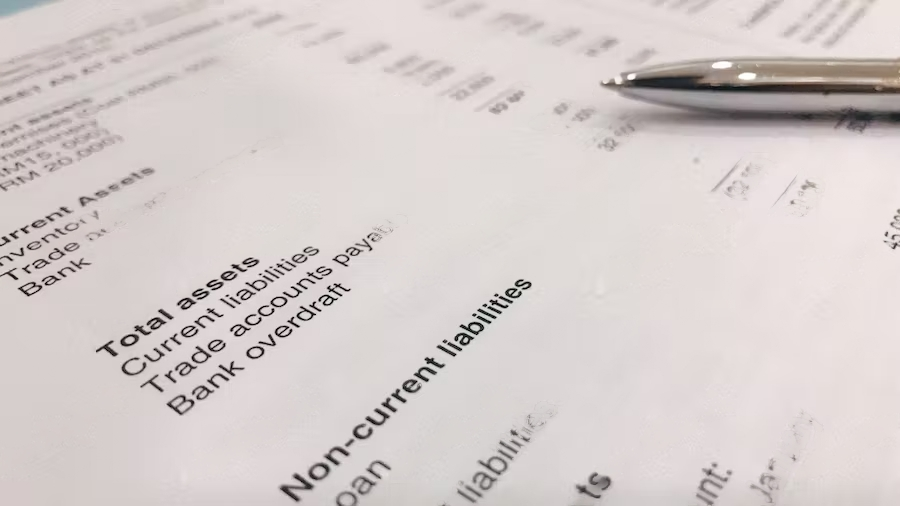
Accounts receivable act as the pulse of a business’s financial status. It is essential for keeping the cash flow healthy and stable.
Furthermore, it can give you the peace of mind you need when dealing with finances.
It lets you rest assured that future payments are guaranteed, so you don’t have to stress over running out of money.
Financial health is the holy grail of any successful business; therefore, it is imperative to consider receivables in accounting to achieve this.
What Are Receivables In Accounting?
Accounts receivable are the amount of money customers owe to the company for unpaid goods or services. This reflects in the overall balance of a company’s finances.
They are recorded on the balance sheet as a short-term asset, which indicates money owed by customers due to be paid within a year. As they are seen as liquid assets, securities such as stocks can be used as surety to borrow money to fulfil any immediate financial requirements.
When you receive payment for an invoice, your accounts receivable account will be decreased by value while your cash account is increased correspondingly in the same amount.
Accounts receivable are key when ascertaining how well your business is doing financially. It is a tangible asset showing the income coming into the business. Evaluating this figure accurately can provide significant insight into profitability and progress.

Accounts Receivable Vs Accounts Payable
Accounts payable refer to all the sums of money a company owes to its suppliers or other parties. Accounts receivable are the opposite because it’s the total amount you’re expecting to be paid by your customers.
Business owners must remember that cash accounts do not always give a clear insight into the company’s financial situation. Accounts payable should be closely monitored to ensure accurate cash flow.
The Importance Of Accounts Receivable
Fundamental analysis of any business involves considering the number of accounts
receivable.
It is regarded as a current asset and is used to evaluate the liquidity and ability of the company to pay off its short-term debts without needing any extra cash flows.
The monitoring of accounts receivable is highly critical as you run the risk of not billing customers or not being aware when payments have been made. This could lead to dangerous circumstances where you render your products/services for free and suffer a loss of profitability.
Timely invoicing is key to receiving payment promptly, and tracking receivables is a great way to provide evidence of income at tax time. The quicker you send an invoice, the more likely you will get paid quickly.
Fundamental analysts are used to preventing these dangerous circumstances. They typically include analysing the accounts receivable and calculating the turnover ratio, known as the accounts receivable turnover ratio. This helps track how often a company has collected its receivables within an accounting period.
5 Tips To Aid You In Accounts Receivable
Stay Organised
Staying on top of your accounts should be a priority. That’s why investing in modern invoicing software is essential. It’ll ensure you can keep track of all your information and send out invoices quickly and efficiently.
Don’t forget to stay assiduous throughout the entire process!
Communicate Effectively With Your Clients
To be successful in accounts receivable management, it is of utmost importance to communicate with your clients, as they are the heart of this process.
Technology can significantly aid you in this endeavour.
In an age where people are chronically online, connecting with your clients through various social media outlets is very effective. By checking in on their social media posts, you can get important information from clients’ special occasions and send emails to check in.
This will help to create an interactive and personal relationship with your clients. If your clients see that you are engaged with them, they will trust that you will do the same with how you deal with payments.

Create An Effective Internal Process
Set up a customary process for managing accounts receivable.
Choose one day in the week to generate, print, and post invoices. Doing this regularly will ensure that you don’t miss any payments or cause inconvenience to your clients.
Select another day to print the aged accounts receivable report and contact customers whose payments are overdue. This would help you keep track of your accounts receivable better. Give each team member different tasks to ensure an organised system for optimal results.
Provide Confirmation For Receipt Of Invoices
Ensuring that all invoices are accurate and error-free is essential to avoid any hold-ups with payment collections.
Sometimes items can get misplaced in the mail, or emails can be mistakenly deleted. By asking about the receipt of an invoice, you can get positive feedback from clients while demonstrating excellent communication skills. Including payment links within the invoices is a great way to speed up the accounts receivable process.
Invest In AR Software
Developing and sending invoices, confirming their receipt, and checking in on late invoices can be very time-consuming. Account receivable software, such as QuickBooks Online, optimises electronic invoicing, cash flow, credit risk, and collections.
Furthermore, it develops effective team collaboration and allows your colleagues to focus on priority tasks such as strengthening customer relationships and identifying and solving difficult disputes.
Develop A Credit Policy
Establishing a credit policy is essential for any business, as it determines which customers can be granted credit from your company and the process of collecting unpaid debts.
It helps to set clear guidelines to manage your finances and effectively maintain accounts receivable.
They are very important as they can help keep your clients disciplined, resulting in better cash flow.
Everything Should Be Documented
Keeping up with your accounts receivable documents is essential when producing financial statements.
Similarly, they can also immensely help your accountant during tax season. Your bookkeeper will benefit from their use in the weekly or monthly inputs for these financial statements.
If documentation is not properly managed, your company’s growth will decline.
Conclusion
Account receivables provide the fuel to drive your business to maximise revenue and
optimal cash flow.
By following these seven simple tips, there is no doubt that your business will be well on its way to success!
FAQS
How can you determine your profitability with accounts receivable?
To accurately measure your business’s financial performance, tally up all of its assets (such as accounts receivable) and deduct any liabilities (what you owe to suppliers and vendors).
This calculation will help you determine the company’s profitability.
When the company creates a positive number, that indicates profitability. However, if you’re looking at negative figures, it’s a great time to make some changes! Increase assets or cut down liabilities to get your business back on track.
Are accounts receivable an asset or a liability?
Accounts receivable are considered an asset because they can be easily converted to cash in the long run.
Are accounts receivable recorded as debit or credit?
Accounts receivable entries are recorded as debits under assets. They should be entered on the left side, while credits should be registered on the right. It’s essential to ensure that these debits and credits are balanced, as this will show you complete accuracy in your accounting records.





